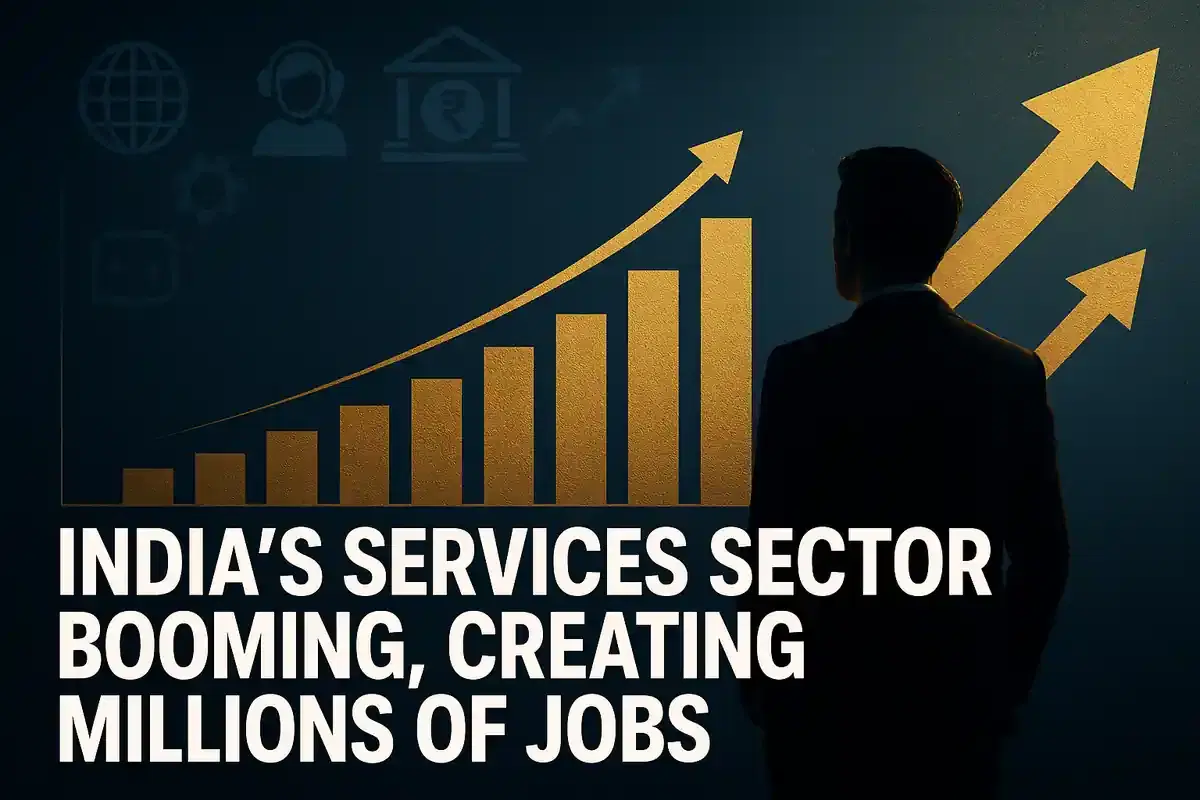India's Services Sector Becomes Major Job Creator, Employment Share Rises to 29.7%
Economy
|
28th October 2025, 11:40 AM

▶
Short Description :
Detailed Coverage :
NITI Aayog's latest reports reveal that India's services sector is a rapidly growing engine for job creation. Its share in total employment has climbed from 26.9 percent in 2011-12 to 29.7 percent in 2023-24. Over the past six years alone, this sector has generated approximately 40 million new jobs, bringing its total workforce to around 188 million people, meaning nearly one in every three workers in India is now employed in services.
The reports highlight a shift within the sector: while traditional services like trade, repair, and transport continue to employ a large number of people, newer, modern services such as finance, IT, and professional services are showing the most promise for future growth and higher-paying opportunities with global connections.
Gross employment elasticity, a measure of job creation relative to economic output growth, has improved considerably, rising from 0.35 before the pandemic to 0.63 in the post-pandemic period. Despite this progress, India's services sector employment share still trails the global average of about 50 percent, indicating room for further structural transition.
Regional disparities exist, with southern and western states leading in the growth of modern services. The insights from these reports are intended to inform strategies for the Viksit Bharat 2047 roadmap, aiming to expand service-led growth and employment.
Furthermore, the reports touch upon the future impact of Artificial Intelligence (AI), projecting it could create up to 4 million new jobs in India by 2030, though it may also lead to the displacement of routine jobs if adaptation measures are not taken.
Impact This news indicates a positive trend for the Indian economy, signaling robust growth in a key sector. It suggests potential for increased consumer spending, higher tax revenues, and a stronger overall business environment. Investors might look for opportunities in companies operating within the growing modern services sub-sectors. The focus on job creation aligns with government economic development goals. Rating: 7/10
Terms Used: NITI Aayog: The National Institution for Transforming India, a policy think tank of the Government of India that has replaced the Planning Commission. GVA (Gross Value Added): A measure of output in the economy, similar to GDP, representing the value of goods and services produced less the value of intermediate consumption. Gross Employment Elasticity: A metric indicating the responsiveness of job growth to changes in economic output. A higher elasticity suggests that a given increase in output leads to a larger increase in employment. Viksit Bharat 2047: A vision document outlining India's development goals and strategies towards becoming a developed nation by 2047.